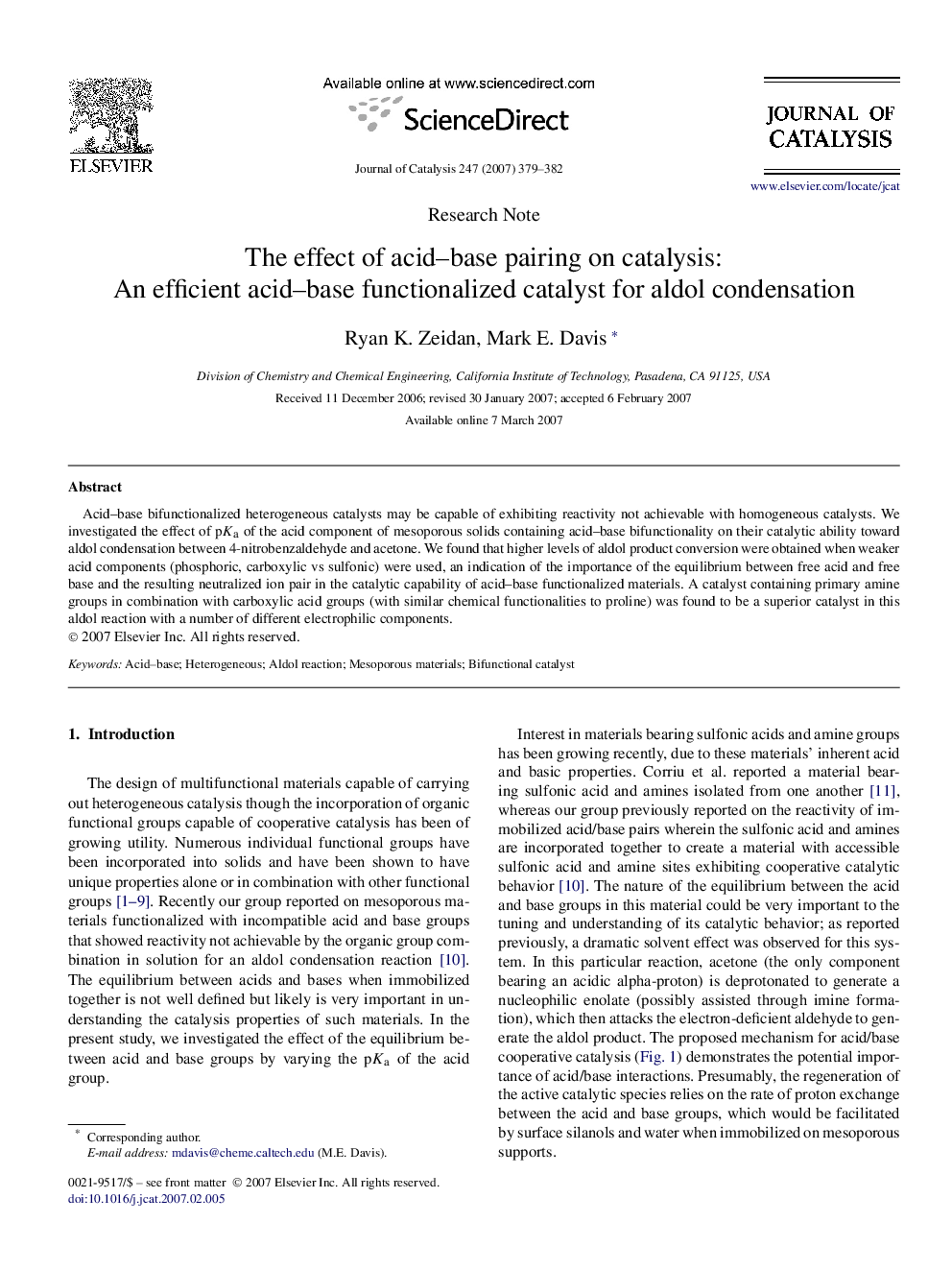| Article ID | Journal | Published Year | Pages | File Type |
|---|---|---|---|---|
| 63207 | Journal of Catalysis | 2007 | 4 Pages |
Acid–base bifunctionalized heterogeneous catalysts may be capable of exhibiting reactivity not achievable with homogeneous catalysts. We investigated the effect of pKaKa of the acid component of mesoporous solids containing acid–base bifunctionality on their catalytic ability toward aldol condensation between 4-nitrobenzaldehyde and acetone. We found that higher levels of aldol product conversion were obtained when weaker acid components (phosphoric, carboxylic vs sulfonic) were used, an indication of the importance of the equilibrium between free acid and free base and the resulting neutralized ion pair in the catalytic capability of acid–base functionalized materials. A catalyst containing primary amine groups in combination with carboxylic acid groups (with similar chemical functionalities to proline) was found to be a superior catalyst in this aldol reaction with a number of different electrophilic components.
